Diabetes is a very serious disease to which, according to statistics, almost every fourth person is susceptible. Since the number of patients today exceeds 350 million people, there is a diligent diet for diabetes, which, according to experts, should be followed not only by patients but also by people prone to the development of the disease.
Excess weight, genetic predisposition or stomach diseases can lead to abrupt cessation of insulin production and other unpleasant manifestations, while adhering to a diet will become a necessary measure to maintain a normal state.
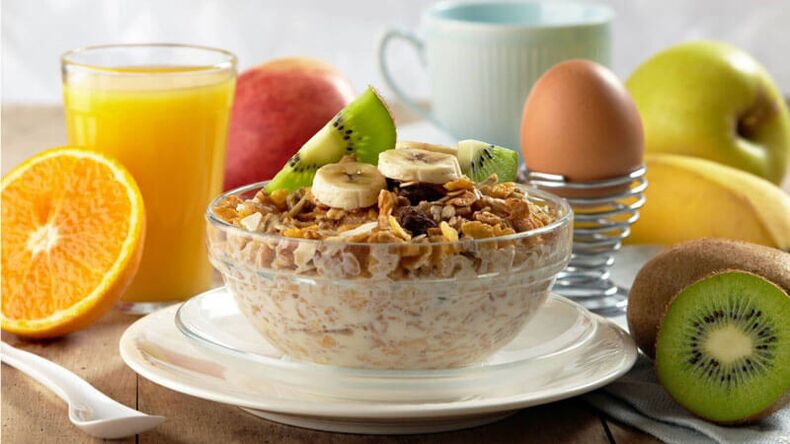
Nutritional peculiarities of diabetes mellitus
Diabetes diet can vary significantly depending on the type of disease. There are usually 2 main types of diabetes, where there are several forms and rules of nutrition, which are due to the causes of metabolic disorders and the conversion of sugar into glucose.
But each type of disease requires adherence to general dietary habits.
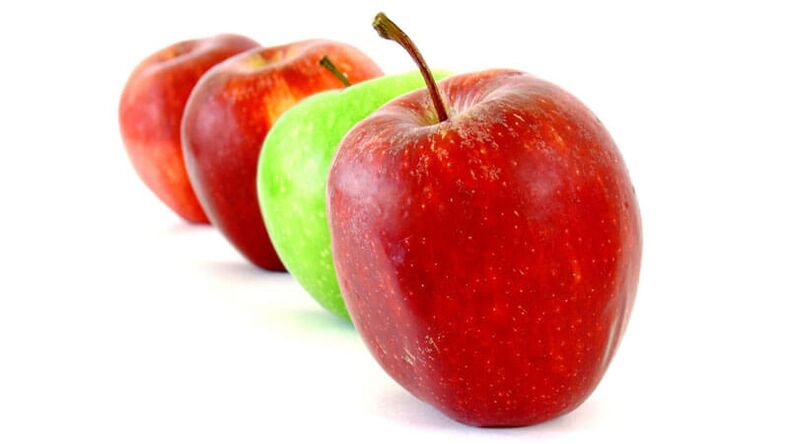
Basic nutrition guidelines for diabetes
Nutrition for diabetics should be carried out in strict compliance with the basic rules. Thus, for both types of disease, there are the following aspects to the diet:
- The diet should include proteins, fats and carbohydrates in a balanced ratio in relation to the presence of disease.
- The amount of food should increase slightly. So, every 3-4 hours you should eat small portions, the dishes of diabetics should be low in calories.
- The caloric content of food and dishes should be calculated carefully and carefully - it should not exceed the daily energy consumption. Otherwise, the likelihood of gaining weight increases, which is fraught with complications in diabetes.
- Almost any diet for patients with presented disease is based on a proper and balanced diet. You should include vegetables and fruits in your diet, carbohydrates and proteins, do not neglect fats and amino acids.
It should be noted that each patient should consult with a healthcare professional about the basics of nutrition for their particular case. It is not recommended to follow a specific diet, even if it is intended for diabetics, without consulting a doctor.
The attending physician should calculate the caloric content for the patient as well as make some changes according to the individual characteristics of the organism.
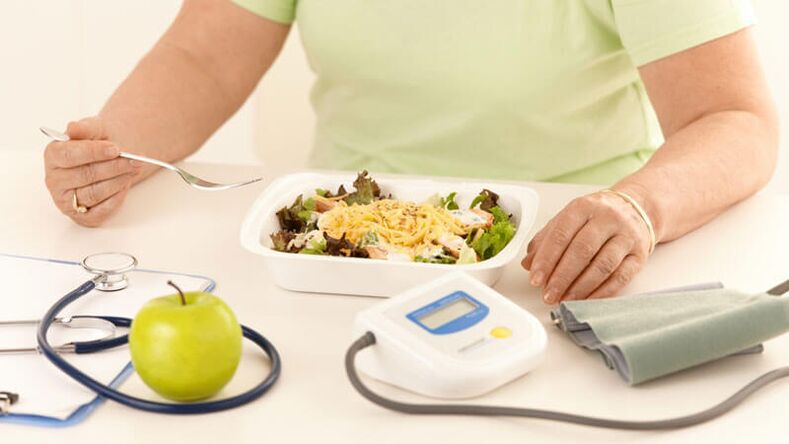
Type 1 diabetes and diet
Strange as it may sound, the type 1 diabetes diet is based on the correct intake of insulin, so here you should consider the use of foods that significantly increase blood sugar.
It turns out that nutrition for such patients does not require any restrictions, it is only necessary to conduct proper accounting and timely introduction of insulin into the blood. Here are the following principles and rules for taking insulin:
- Foods that do not contain a lot of carbohydrates should not be considered. For example, meat and fish, eggs and cheese, cottage cheese and butter can be consumed in reasonable quantities, but their consumption should not be reduced or eliminated.
- Only carbohydrate-containing products can be counted - these are flour and confectionery, as well as plant-based products and liquid dairy products.
Insulin should be prescribed according to the amount of food consumed. You also need to adjust your food intake in a timely manner. Here you should use the following principles and rules for taking insulin:
- If treatment is with short-acting insulin, then it is given 20 minutes before eating;
- If the treatment is with medium-acting insulin, then it is administered 40 minutes before eating;
- When using the combined type of insulin, it is prescribed according to the scheme 20 minutes before breakfast, every 3 hours during the day and half an hour before a full dinner.
The dose of insulin should be calculated according to the amount of food consumed. The calculation is performed by calculating bread units (XE).
The unit is a 25 gram piece of bread (10-12 g of carbohydrates) that raises a person’s blood sugar by 1. 8 mmol / L.
The attending physician can tell you exactly about the calculations. Also, to accurately calculate your insulin dose, you should look at a chart that shows the carbohydrate content of each product.
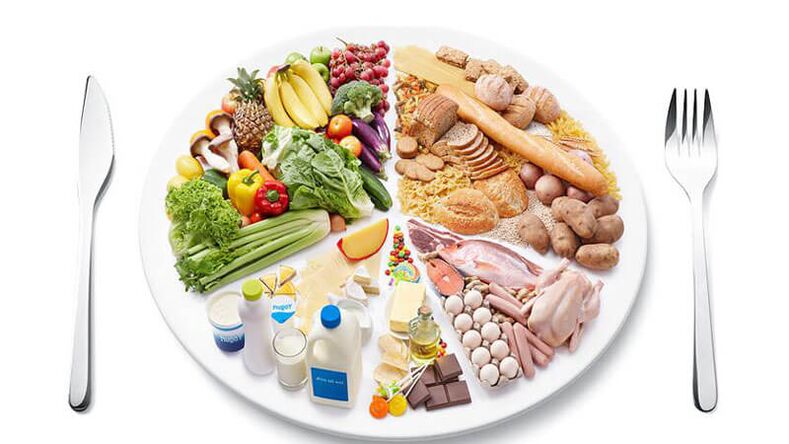
Type 2 diabetes and diet
The type 2 diabetes diet is significantly different from the first type diet. It is important to consider not only the products allowed for consumption, but also to carefully monitor the caloric content of the daily diet. So here are the following indicators:
- The normal daily caloric content should be in the range of 1600-2500 kcal, depending on the patient's weight and energy consumption;
- In the presence of excess weight, the caloric content is necessarily reduced to 1300-1500 kcal;
- If there is a lot of excess weight, the attending physician can reduce the caloric content to 1000 kcal per day;
- There are cases when the excess weight significantly exceeds the norm and the daily caloric content is reduced to 600-900 kcal.
The caloric content of food should be calculated by the attending physician, as it takes into account not only the indicators of human weight, but also the presence of diseases such as heart arrhythmias, severe chronic diseases, gout and mental disorders.
The diet of type 2 diabetics is as follows:
- Carbohydrates in the total daily diet should not exceed 55%. Preference should be given to products that are saturated with vitamins, minerals and dietary fiber. For example, whole grain breads, cereals, legumes and vegetables. As for sugar-containing products, they are completely abandoned. Consumption of xylitol or sorbitol instead of sugar is allowed at 0. 5 g per 1 kg of patient weight, divided into 2-3 doses simultaneously.
- For a patient with type 2 diabetes, protein is allowed according to the physiological norm of a healthy person - 90 g per day. Preference should be given to lean meats in the form of poultry, lean fish and cottage cheese. The daily intake of proteins in the ration is 15-20%.
- 30% of the daily ration contains fats, which come from more vegetable oils in the body.
- They consume limited amounts of salty and fatty foods.
Experts advise us to take the diet of diabetics seriously. It is better to do the menu every day, for 2-3 days or even for a whole week.
It will not be superfluous to present it to the attending physician who will be able to adjust it according to the patient's health condition.
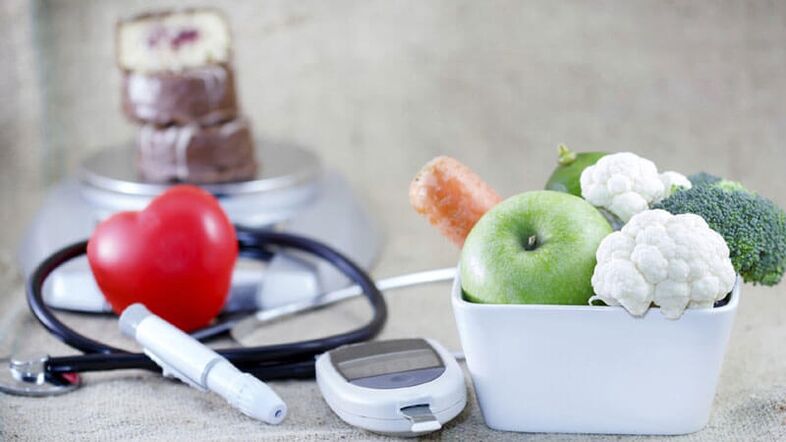
Features of a low carb diet for type 2 diabetes
As a rule, most patients with type 2 diabetes are overweight, which needs to be eliminated immediately, so that the person can more easily tolerate the disease and not react to the sharp and significant "jumps" in blood sugar levels.
Thus, many experts suggest a low carb diet for type 2 diabetes. What is this?
Scientists suggest that it is quite difficult for patients to adhere to proper nutrition and basic principles as soon as their disease is diagnosed.
In addition, the main task here is to lose excess weight, therefore, the patient must reduce calorie intake, which is not always possible.
So, a person starts a sharp drop in blood sugar level, which is followed by constant hunger. According to scientists, this is easier to avoid by getting more protein.
Protein foods are perfect for weight loss. In addition, protein foods are safest for people with diabetes. This diet is more reminiscent of the familiar "Kremlin".
But such a diet should be applied only with the permission of the attending physician, because the intake of large amounts of protein in the body can be dangerous to health and lead to exacerbation of chronic diseases.
If you follow the presented diet, it is recommended to take special vitamins for diabetics, which will be prescribed by the attending physician.
"Table No. 9" Principles and Basics of Diet
Most specialists support not only proper nutrition but also the use of a special medical diet.
So, a diet called Table 9 was developed for patients with the disease in particular, which corresponds to the approved list of all medical nutrition funds.
It indicates exactly how to eat properly with diabetes, listing the allowed and forbidden foods.
The presented menu is also divided into two categories corresponding to types 1 and 2 of the disease. But there are general principles we need to learn and follow to maintain normal blood sugar levels.
"Table Number 9" diet principles
The presented diet contains basic principles that should be considered without question. This includes the following aspects:
- Meals are available 6 times a day. The main feature is that you have to eat every 3 hours in small portions.
- The menu for diabetics is compiled without the inclusion of fried, spicy, fatty foods.
- You can eat only cooked, stewed and baked dishes.
- For diabetics, sweets should be replaced with natural products or with the addition of sweeteners.
"Table No. 9" contains a complete list of foods rich in vitamins and other useful micronutrients that are allowed for consumption. You should pay attention to fruits with a high content of ascorbic acid, which are allowed to be consumed in small quantities during the day.

What you can eat with diabetes
The presented diet fully indicates to patients what they can eat with any type of diabetes. It is recommended to include these foods in the diet to maintain sugar levels and prevent complications. Allowed products include:
- All flour products made from whole grains and wholemeal flour;
- Sausages with fatty and fatty inserts of low content;
- All types of fish associated with low-fat varieties;
- All types of lean meats;
- Herbs and green vegetables;
- Fruits with low sugar content;
- From cereals oatmeal, buckwheat and millet are allowed;
- Any low-fat dairy products;
- Tea, freshly squeezed juices from fruits and vegetables are allowed, herbal teas are allowed from drinks.
Permitted food is consumed according to the above rules and characteristics, depending on the type of disease.
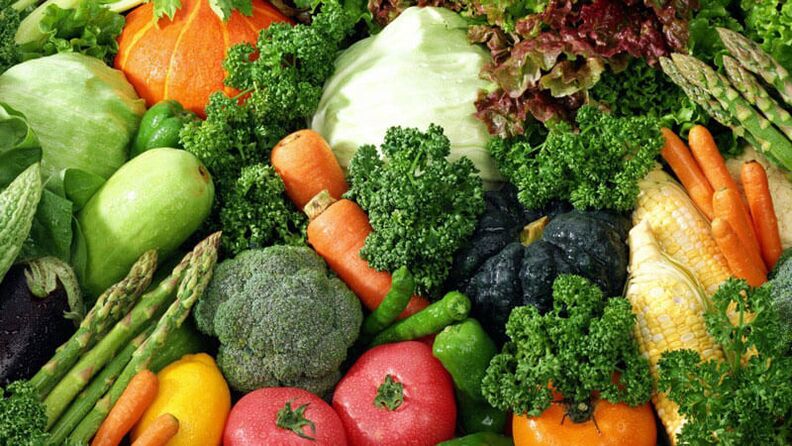
What not to eat with diabetes
In the diet "Table number 9" is a list of prohibited foods, they should be consumed with maximum vigilance and accuracy. The list of prohibited products includes:
- All kinds of sweets, including sweets with high sugar content (Type of jam);
- Fatty poultry meat;
- Salinity in the form of salted fish, salted canned food and other pickles;
- Fatty and drinkable fermented milk products, for example, baked milk, cream and yoghurts;
- You can not eat strong broths of meat;
- Pasta, rice and semolina are forbidden - they increase sugar levels;
- Hot spices, seasonings, foods;
- Sweet fruits;
- Industrial juices from packages - they have a high sugar content;
- Any alcoholic beverage.
The type of disease in this case in no way affects the possibility of consuming prohibited foods. According to experts, even patients with type 1 diabetes should follow a diet so as not to aggravate the situation.
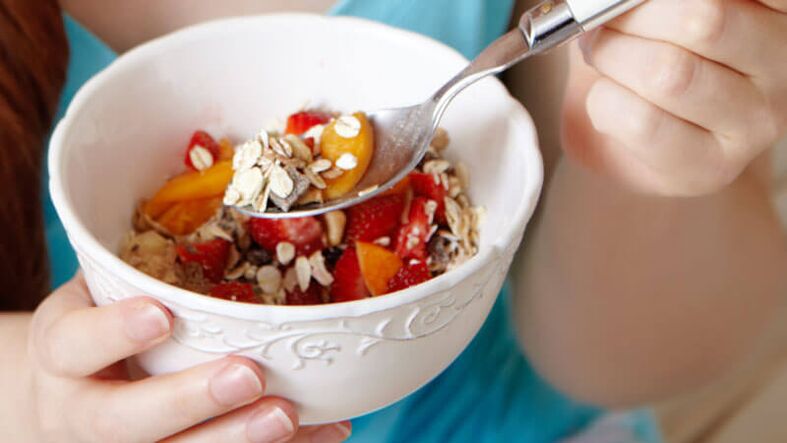
Controversial fruits and vegetables for diabetes
There are several controversial issues in the diet of people with diabetes. It is said that while natural products are allowed, including spices, doctors themselves are beginning to restrict the use of patients. What is the reason?
Controversial fruits in diabetes
The article repeatedly mentioned that the consumption of sugar-free fruit is allowed in the presence of the presented disease. They contain little sugar and therefore it does not cause any harm to the patient.
However, what fruits can be eaten by diabetics, even patients with long experience do not know exactly. There is no need to talk about banning the consumption of grapes, but there are some controversial fruits, including:
- Persimmon. Is it possible to eat persimmon with diabetes if its taste vaguely resembles sweet. This fact confuses most patients.
As it turns out, in fact these fruits contain many vitamins, amino acids, trace elements and sucrose. This fact even allows patients to use persimmon, as it has a beneficial effect on the body. But this fruit also has a high glycemic index - 70%.
It turns out that persimmons can be eaten, but in limited quantities - 70 g of fruit is 1 XE. In type 2 diabetes, persimmons are also allowed for consumption, but in limited quantities - no more than 1 fruit per day.
- Tangerines. Citrus fruits are allowed for diabetics, but in moderation. But whether it is possible to eat mandarins with diabetes is a moot point.
The fact is that mandarins contain large amounts of carbohydrates, which leads to a sharp rise in blood sugar levels in patients with diabetes. Therefore, experts advise you not to eat tangerines, even in moderation.
- Watermelon and melon. Melons ripen in late summer, prompting patients to eat watermelons and melons.
These berries have a high glycemic index - 75% and 65%, respectively. This causes the patient to have a sharp drop in blood sugar, which provokes weakness and causes fatigue.
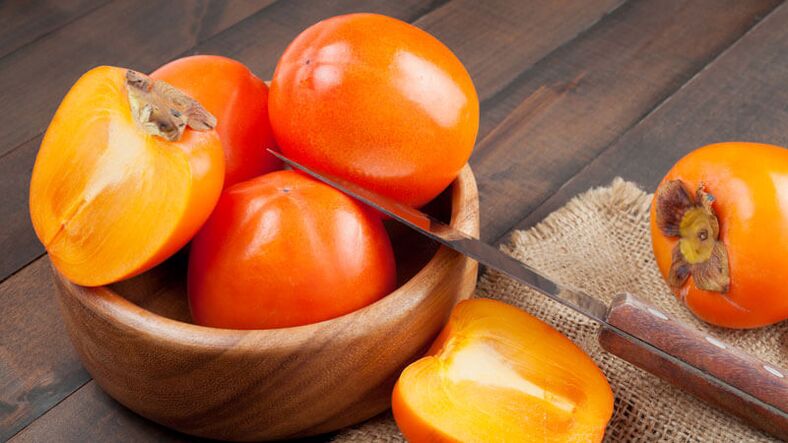

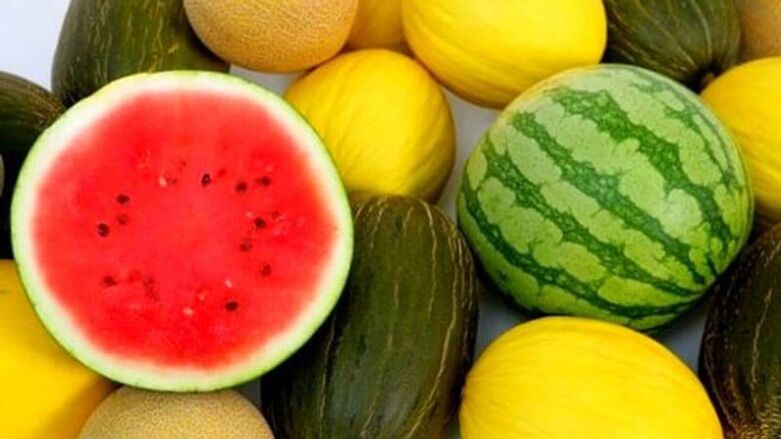
For diabetics these products are prohibited or require the use of bread units. Each patient should consult a attending physician who can calculate the allowable dose of fruit.
Controversial vegetables and roots in diabetes
The use of vegetables in diabetes is also controversial.
Many patients do not even realize that vegetables and root crops, such as potatoes, carrots, beets, and tomatoes, are strictly forbidden.
The listed vegetables contain large amounts of glucose, starch and sugar, which is unacceptable for patients with diabetes.
The following products are also under consideration:
- Jerusalem artichoke for diabetesRecommended for use by many experts. It contains many amino acids, trace elements and inulin, which is at least 80%. This enzyme is a polysaccharide composed of many chains of fructose. It turns out that this root vegetable should not be consumed in unlimited quantities, but it should be included in the diet for diabetes, as its benefits lie in the prevention of diseases of the gastrointestinal tract.
- Pumpkin is a useful vegetable for diabetics. It contains a large amount of proteins, carbohydrates, fiber, which has a positive effect on weight control and maintenance and also promotes weight loss. As a result, it turns out that pumpkin with type 2 diabetes should definitely be eaten, you just need to carefully monitor the amount of product in the portion, because it also has a high sugar content.
- Sour cabbage for diabetics also causes a lot of controversy because, as already mentioned, salting is prohibited for patients. However, the use of this type of salt is allowed for patients with type 2 diabetes. Cabbage and pickles improve metabolism, leading to gradual weight loss. Also, there are useful properties for the work of the gastrointestinal tract. Therefore, you can use sauerkraut, but only in small quantities.
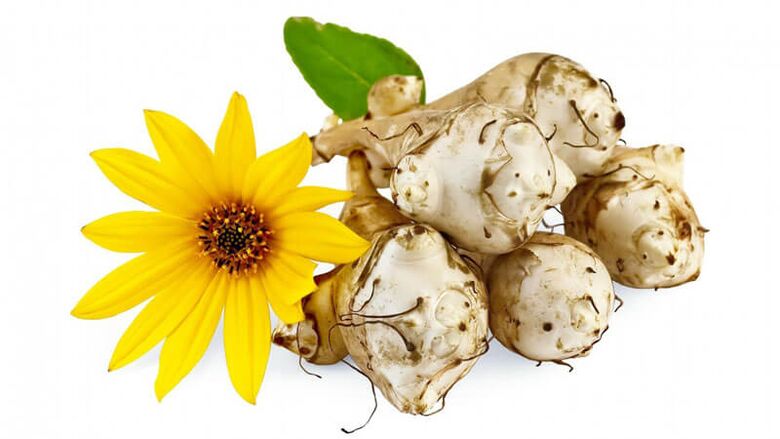

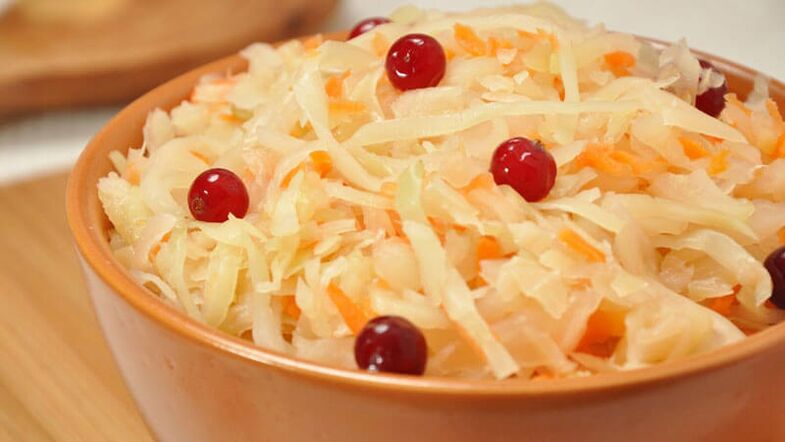
By looking at the recipes of diabetics, you can discover many interesting things in the consumption of foods, including vegetables and fruits.
Here you need to carefully consider the number of products needed for preparation. If necessary, you need to calculate the amount of food you can consume.
Healthy food for diabetes
For diabetics, some natural products act only as a beneficial effect on the functioning of the whole organism. So, for example, you can not completely rule out glucose consumption. It is the basis of most of the processes going on in the human body, acting as an integral part.
Considering the necessity and benefits of using natural products for diabetes, scientists give their list, which lists all the features that should be observed when choosing and compiling a diet.
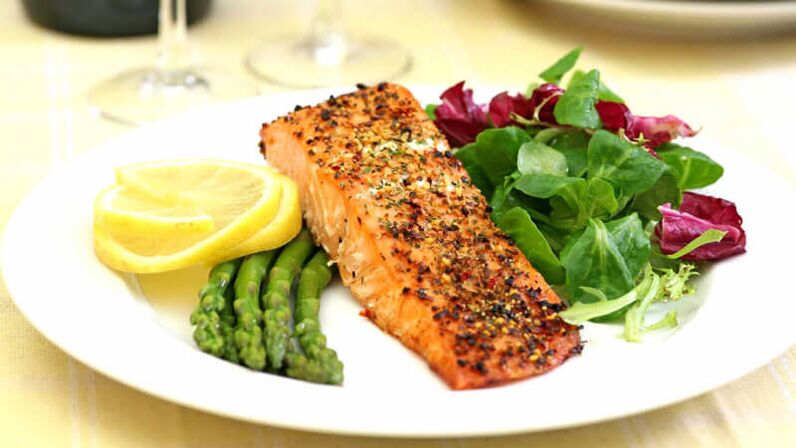
honey
Most patients refuse to take honey. They appear to contain a lot of sugar and glucose. As it turns out, this natural product is only 40% sucrose. But it contains the same amount of glucose that can prevent the use of honey for diabetes.
Nevertheless, experts say that honey is simply irreplaceable for diabetes. They can replace regular and regular sugar.
In type 2 diabetes, the portion of honey should not exceed 1-2 tablespoons. Divide into several stages: Add to baked goods or tea.

Cinnamon
Cinnamon is mandatory for patients with type 2 diabetes. Due to the composition of the spice in the body increases the sensitivity of cells to the produced insulin, which helps to normalize and reduce blood sugar levels.
In addition, in diabetes, cinnamon helps cleanse blood vessels and internal organs from toxins and toxins, which has a positive effect on the prevention of thrombophlebitis and other serious diseases.
For a nice use of cinnamon add half a teaspoon of tea or coffee. You can also lightly sprinkle all the dishes with spices according to your taste and preferences.

Laurel leaf
Bay leaf is essential for use in diabetes, but is contraindicated in the presence of serious diseases. So, this natural product should definitely be used to boost immunity, speed up metabolism, cleanse the body of toxins and toxins.
On the other hand, bay leaves should not be consumed by people with late stage diabetes, kidney disease or stomach ulcers.
Bay leaf is mandatory in type 2 diabetes when the patient is overweight and has high cholesterol.
The use of bay leaf is allowed as a napkin for dishes, but it is still more useful to use an infusion. To prepare it, take 10 sheets of bay leaf and pour three cups of boiling water.
Leave the infusion for 3-4 hours. Take 100 g three times a day and half an hour before meals. This will help you maintain your glucose levels at the right level.

Stevia
Almost no one knows about the benefits of stevia in diabetes, but regular use of the infusion helps maintain the required level of glucose, strengthens blood vessels, lowers cholesterol and blood pressure, and significantly improves blood microcirculation.
The collection is easy to buy at the pharmacy. It should be boiled according to the instructions provided, and drink herbal tea in hot and small sips.
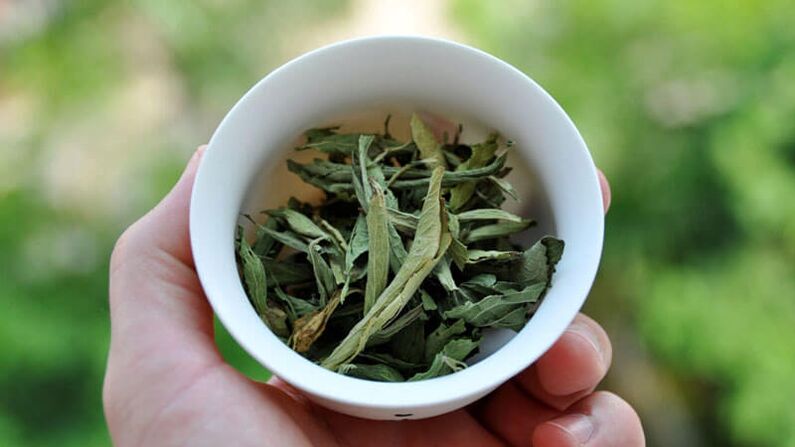
Eat properly with diabetes, in accordance with the basic recommendations of specialists. This way you can keep your blood sugar levels at a healthy level and feel great in any emergency situation.




















